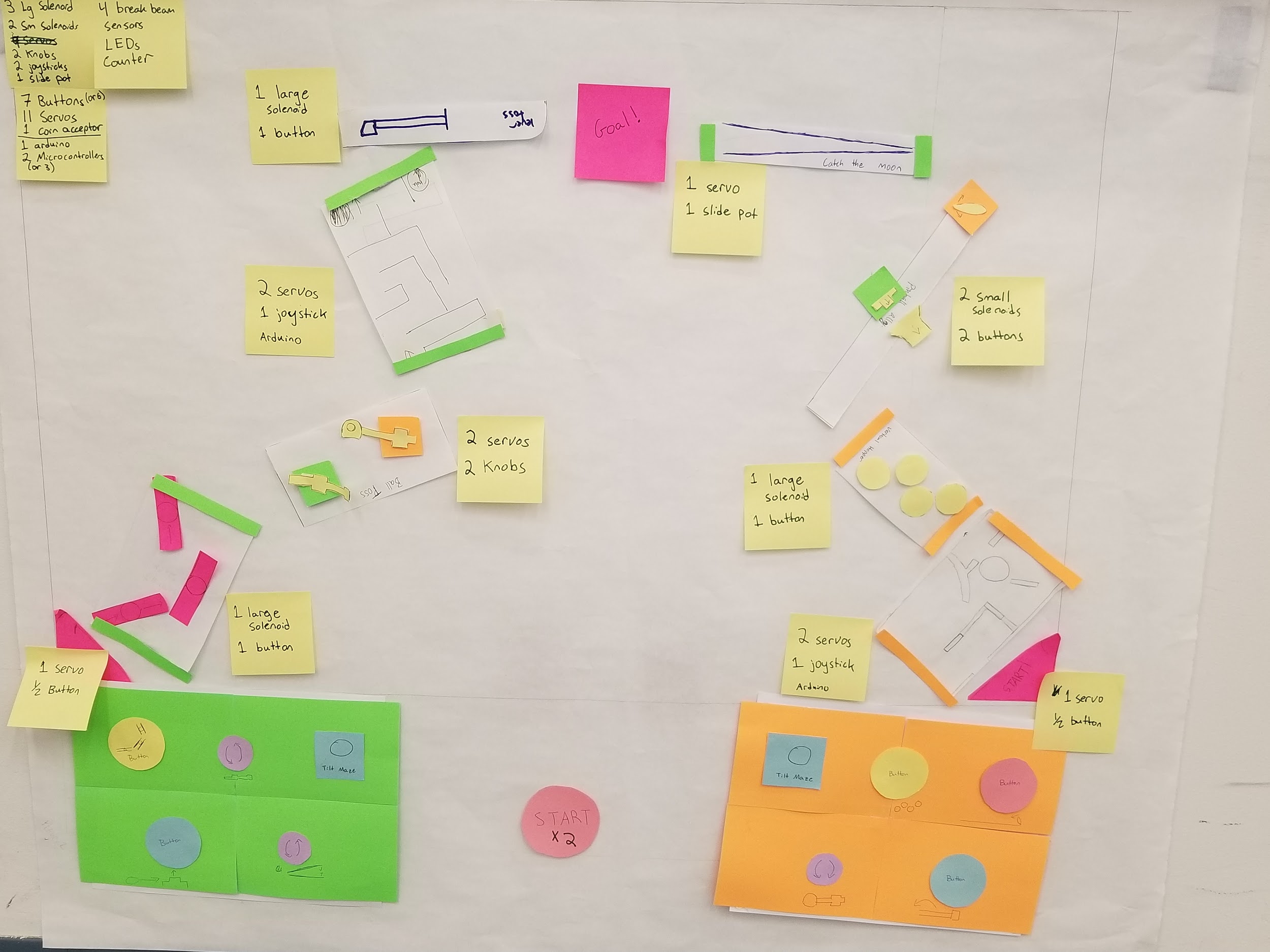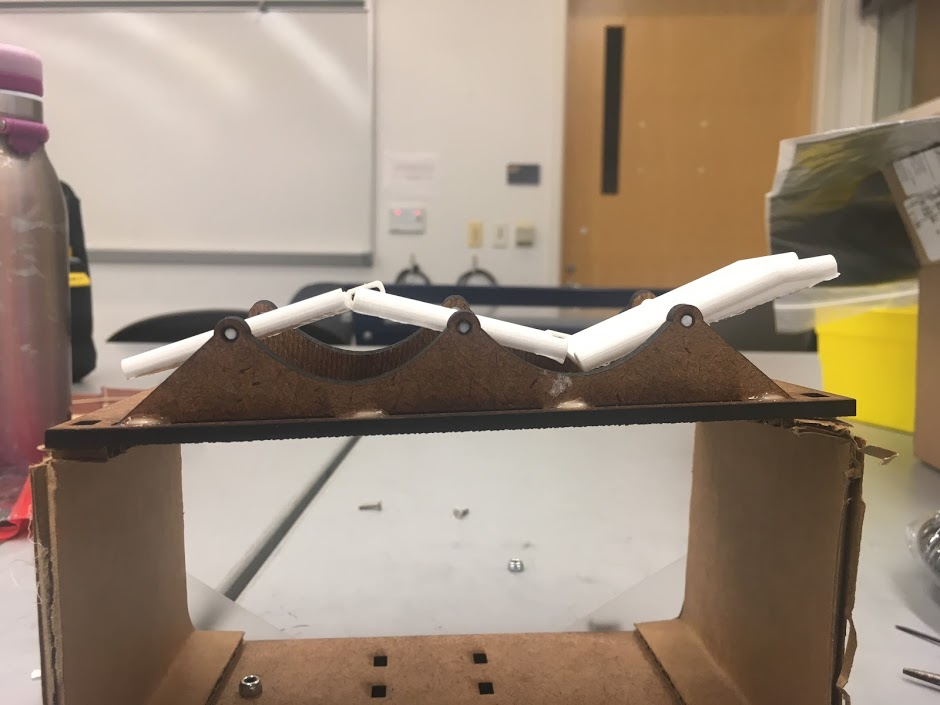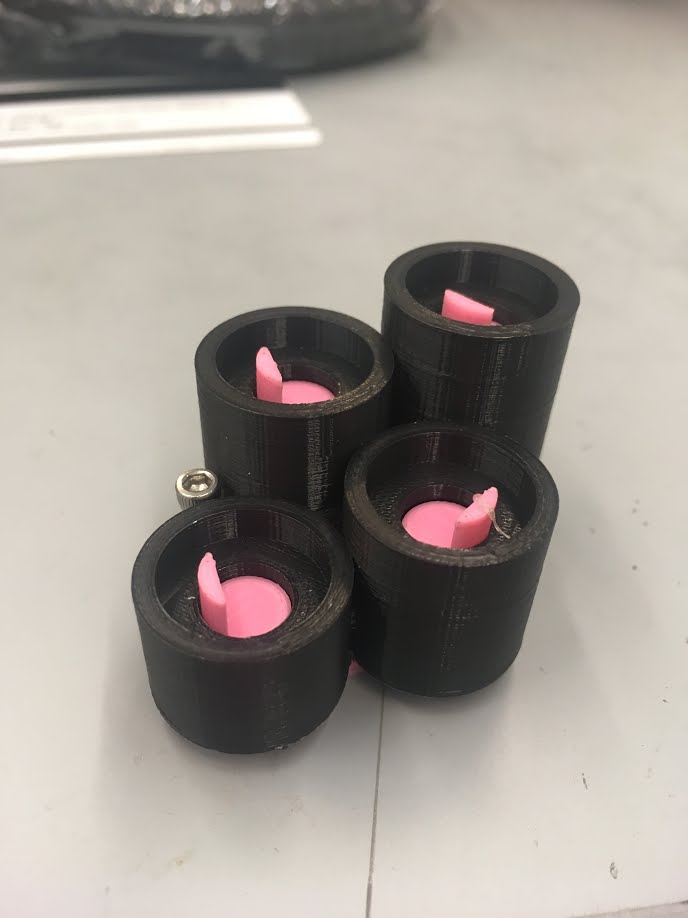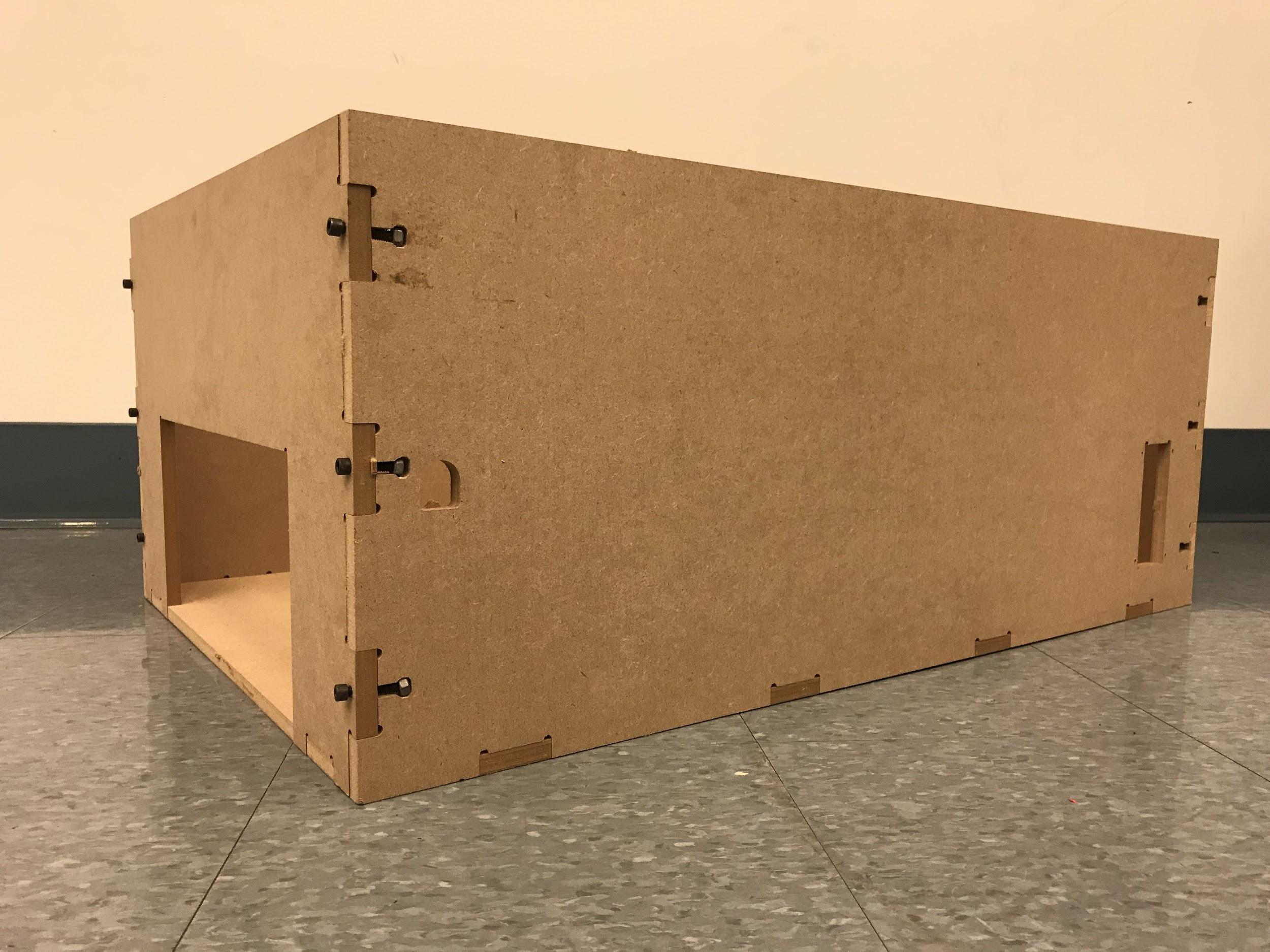Sprint 2

In sprint 2, we fully fleshed out what Lunacy was going to be. We developed a name, a theme, and a full concept map with all eight obstacles that included their controls and actuators. We also designed the first iteration of the box and designed and fabricated two more obstacles.
The Game Thus Far
Minimum viable game
A two-player cooperative with with four obstacles per player.
Objective
Two players must work together to get the ball to the end of the obstacle course
Scoring
The game is scored based on how quickly the players can move their balls through the obstacles
Obstacles Built
Uncovered tilt maze, Popper, Weeble Wobble
Theme
SPACE
Name
Lunacy
Concept Map

The concept map includes the updated game size (now 30in by 24in). We also added the control panels. The green player controls the obstacles marked with green, and the orange player controls the obstacles marked with orange. Both sides have an obstacle where the players have to work together, and the last obstacle on each side is controlled by the other player.
The Weeble Wobble
Weeble wobble is the first obstacle in the original screwball scramble. In our version of the game, the player presses a button which causes the ramps to change direction. The player has to time the button presses so that the ball moves from one side of the ramps to the other.

The Popper

Popper is also in the original screwball scramble. The player has to hit a button which actuates a solenoid and causes the ball to pop from one level to another. The button is attached to a force gauge that is constantly moving and changes the strength of the pop. If the player hits the button when the force gauge is in the wrong position, the ball could go flying off of the obstacle.
The Box
We also designed the box that will contain the entire game. We designed the box so that the sides can unscrew and come off easily which will allow us to access everything in the box. We also designed the basics of the ball return system during this sprint. We decided that the playing field would be sloped so that if a ball fell off of an obstacle, it would roll towards the side of the box, and when the ball reached the sides of the box, it would fall onto a ramp that would funnel the ball to two ball return doors.

Lessons Learned
- Always order more parts than you think you will need
- 3D printers are not very accurate
- A 4'x8' piece of MDF will not fit in any of our cars
- Shop Bots can drill straighter than we can